Porto – Portugal
Arrived in Porto! Total chaos in the Old Town navigating a web of narrow roads jammed with traffic, searching for our hotel. Uncle Google announced you’ve arrived! The only problem was that the traffic was insane, and the name of the hotel was way up in the sky on top of the building – no visible street numbers.
I recommend that if one has a car, you park at Parque da Alfândega, R. Nova de Alfândega 80, Porto. It cost us 20 Euros for 72 hours with unlimited in and out privileges. The parking lot is on the waterfront. It’s easy to get in and out of the city from there and the parking attendants are extremely helpful. Take a taxi from there to your hotel.
We stayed in the Ribeira district a few blocks up the hill from the riverfront. An outstanding location. From there, all the highlights are within walking distance. Once we were settled in our hotel and the car issue was taken care of, we headed uphill to Rua das Flores. A pedestrian street flanked by historic homes adorned with wrought iron balconies, Rua das Flores attracts a constant stream of visitors who browse the stores, relax at outdoor cafes and restaurants, and observe the theatre of life passing by.
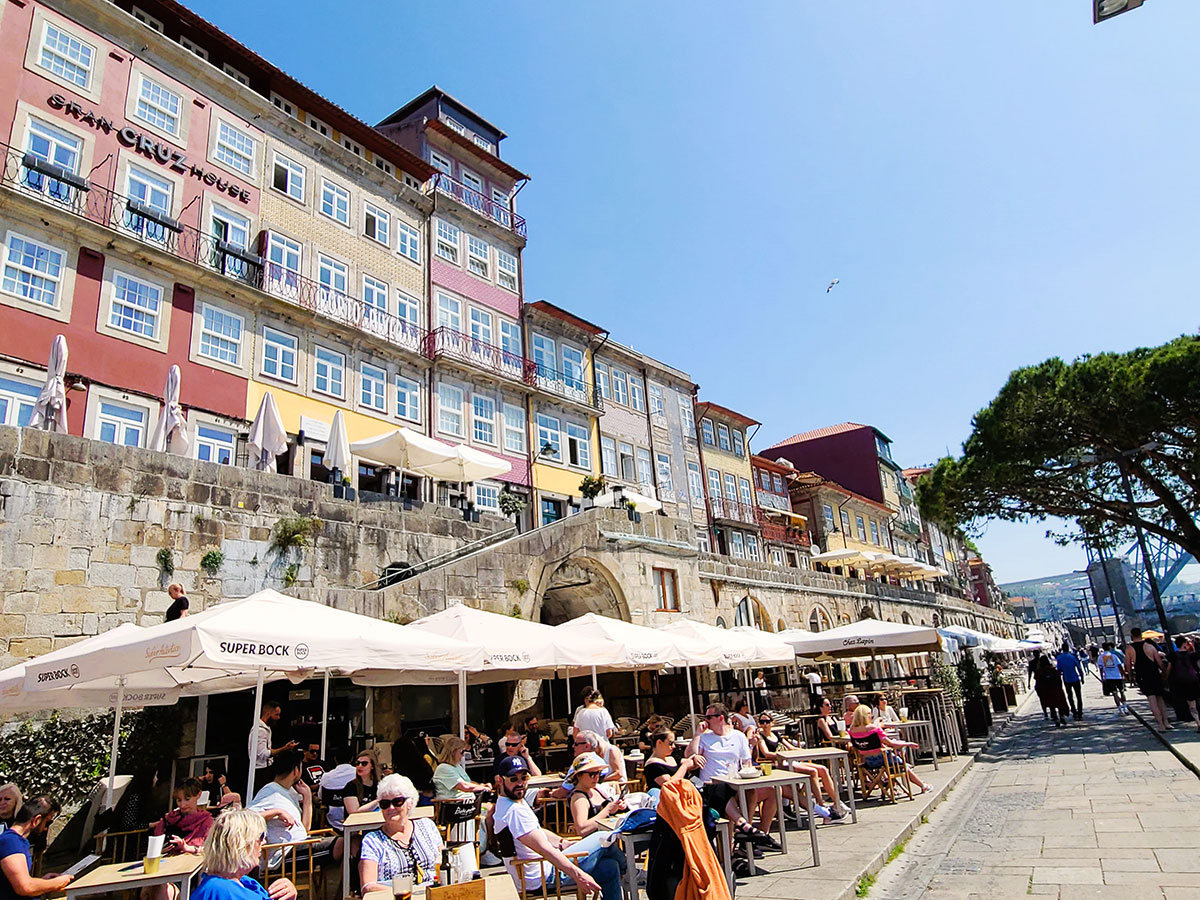 The Riverfront – Ribeira.
The Riverfront – Ribeira.Across the square, at the top end of Rua das Flores stands the imposing Estacào de
Sào Bento – the train station. The interior is what one would expect to come across in an art gallery: Walls covered in blue and white azulejo tiles depicting Portugal’s wars, royalty, and transportation history. This masterpiece is the work of the artist Jorge Colaϛo, who worked on it for eleven years from 1905 – 1916.
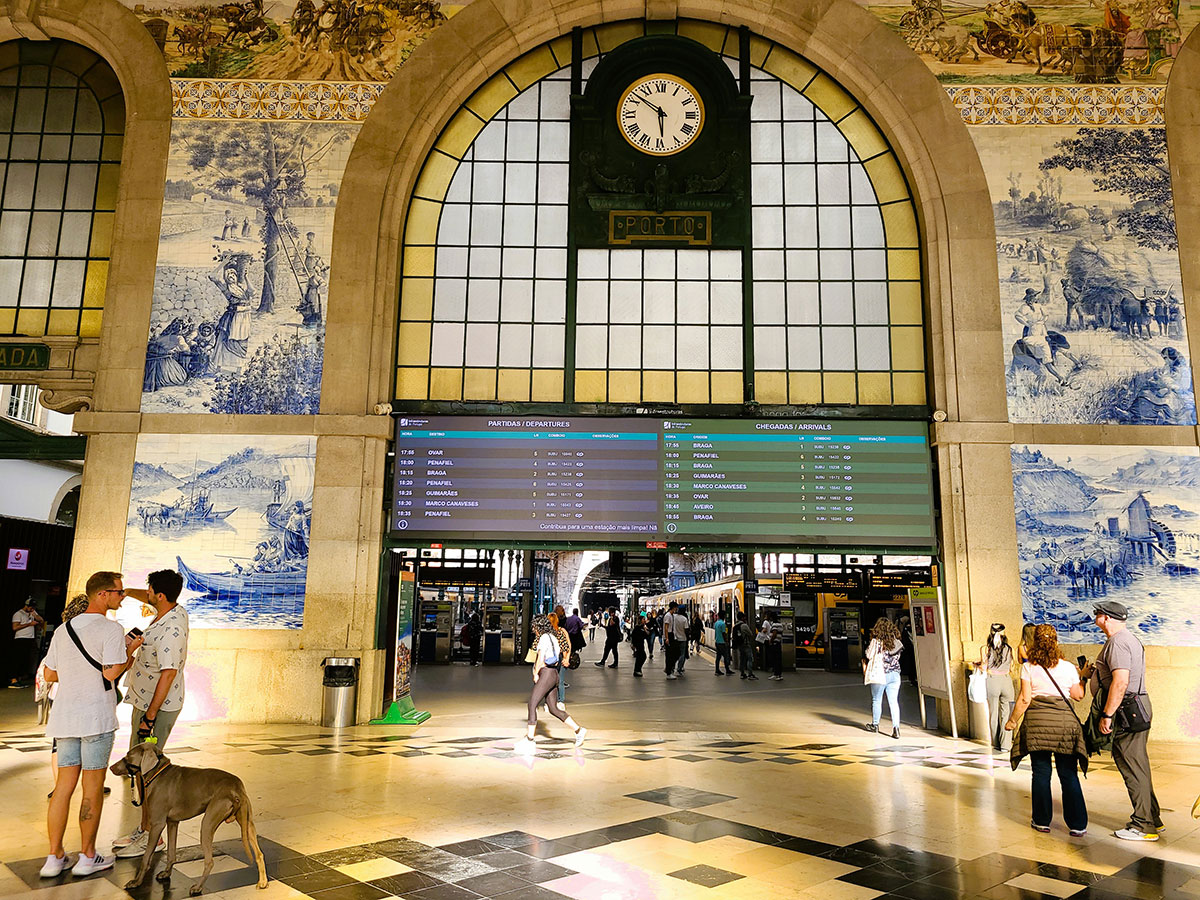
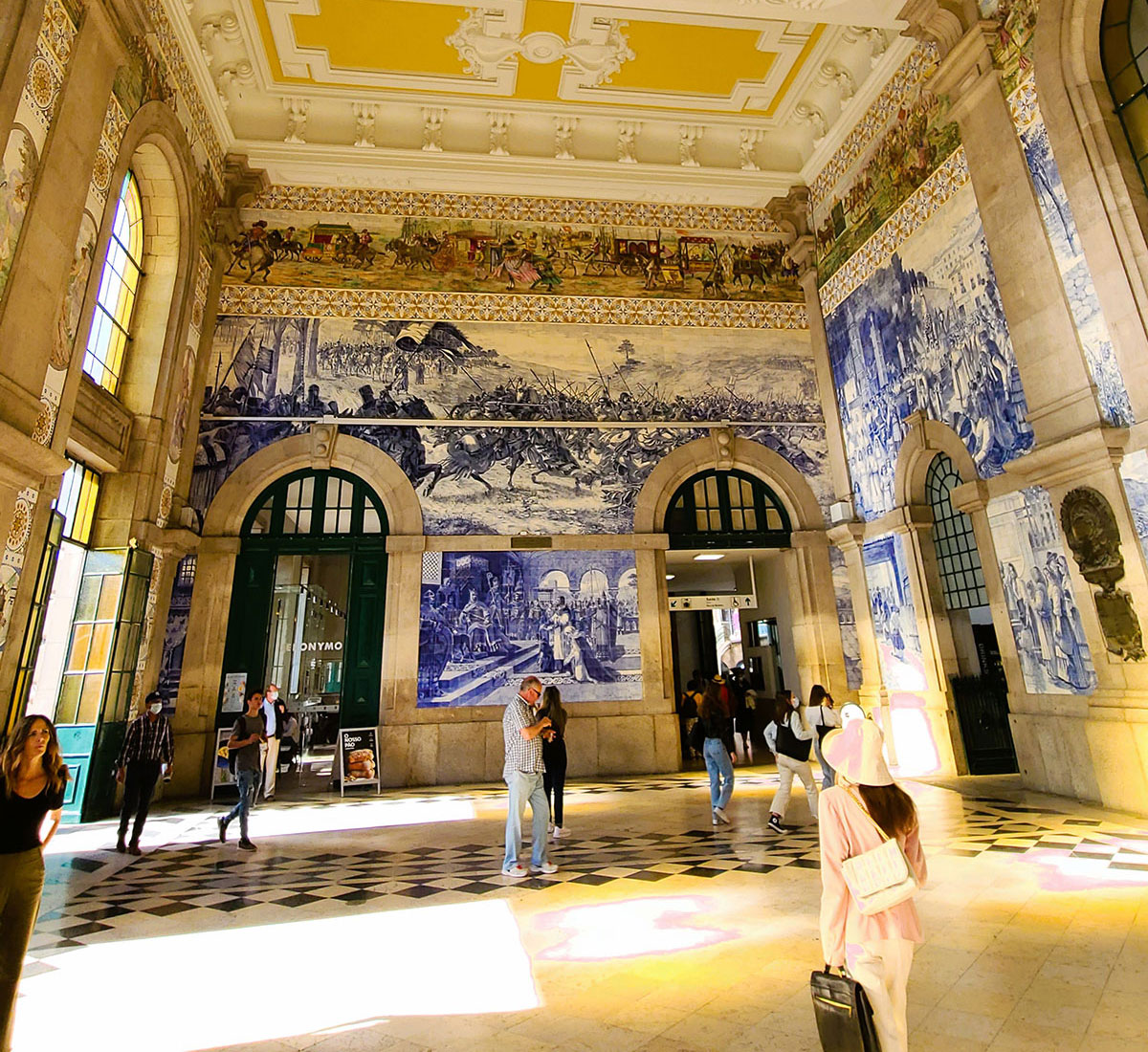
Avenida dos Aliados, a five-minute walk from the station, is Porto’s most elegant boulevard. It’s dominated by City Hall at its Northern end and lined with grand Belle Epoque buildings that house banks, designer stores, five-star hotels, and financial institutions.
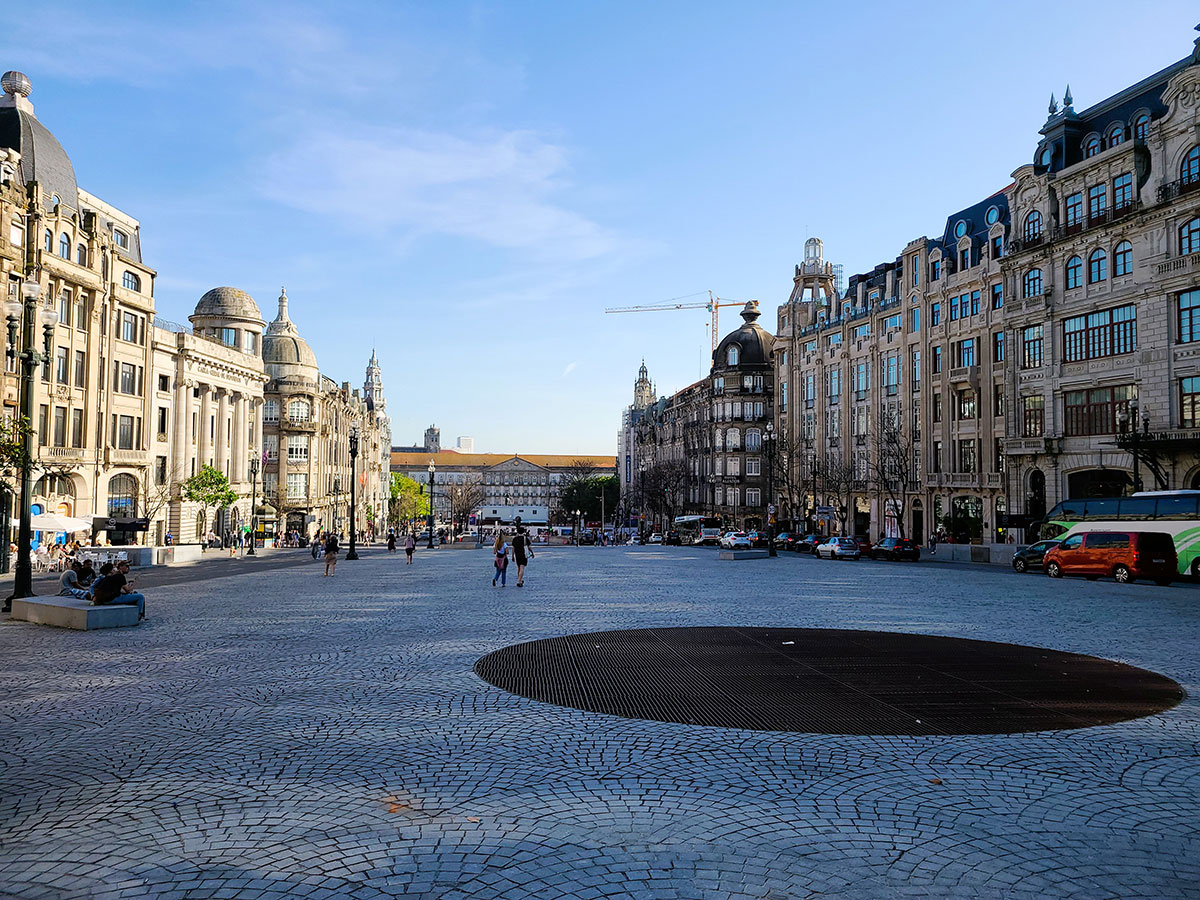 View of Avenida dos Aliados from the steps of City Hall.
View of Avenida dos Aliados from the steps of City Hall.Rua Clerigos twists and turns from the Southern end of Avenida dos Aliados to Torre dos Clérigos, Porto’s equivalent to the iconic Empire State building in New York and the Eiffel Tower in Paris. It’s the city’s landmark, designed in the mid-18th century by the Italian architect Nicolau Nasoni, who is responsible for much of Porto’s impressive baroque architecture. It is fitting that Nasoni was buried in the majestic church attached to his most recognized and acclaimed tower.
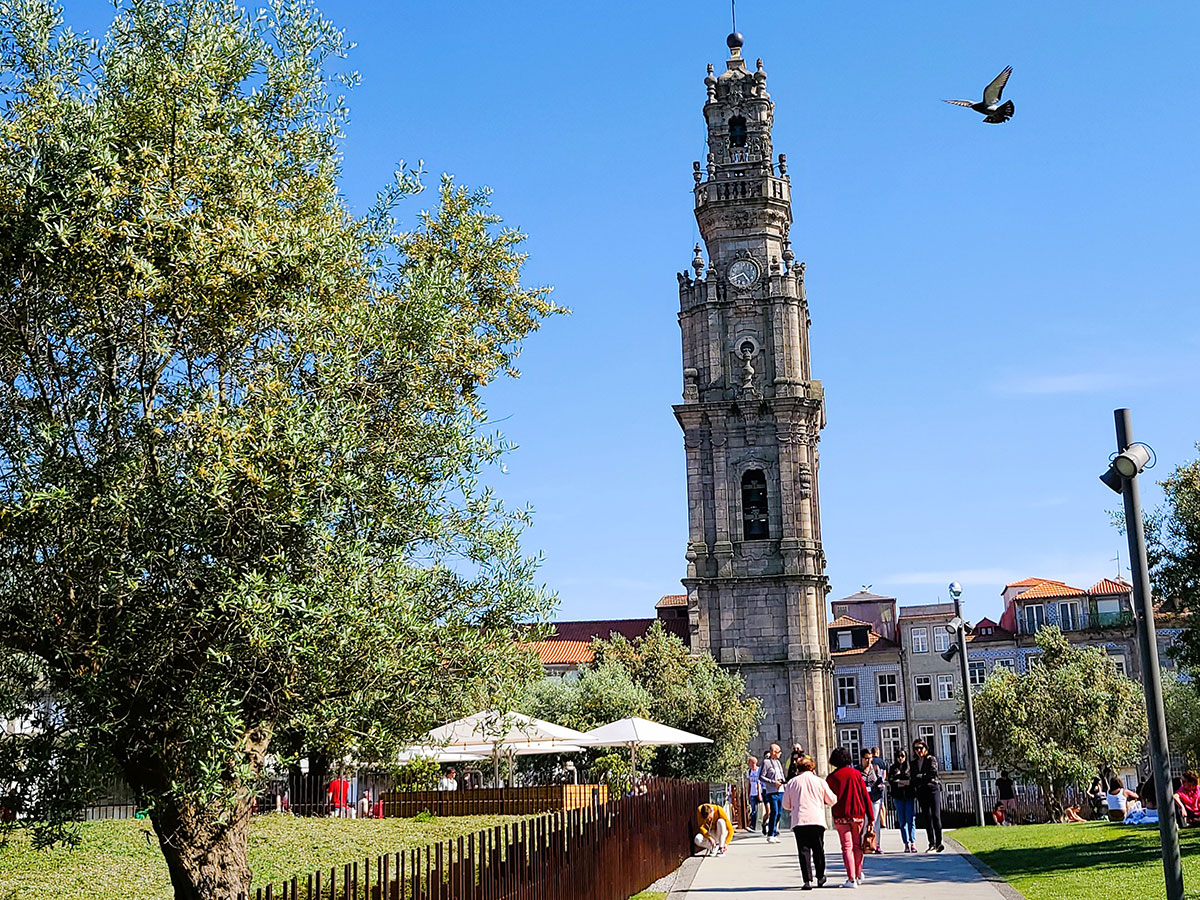 Torro dos Clerigos.
Torro dos Clerigos.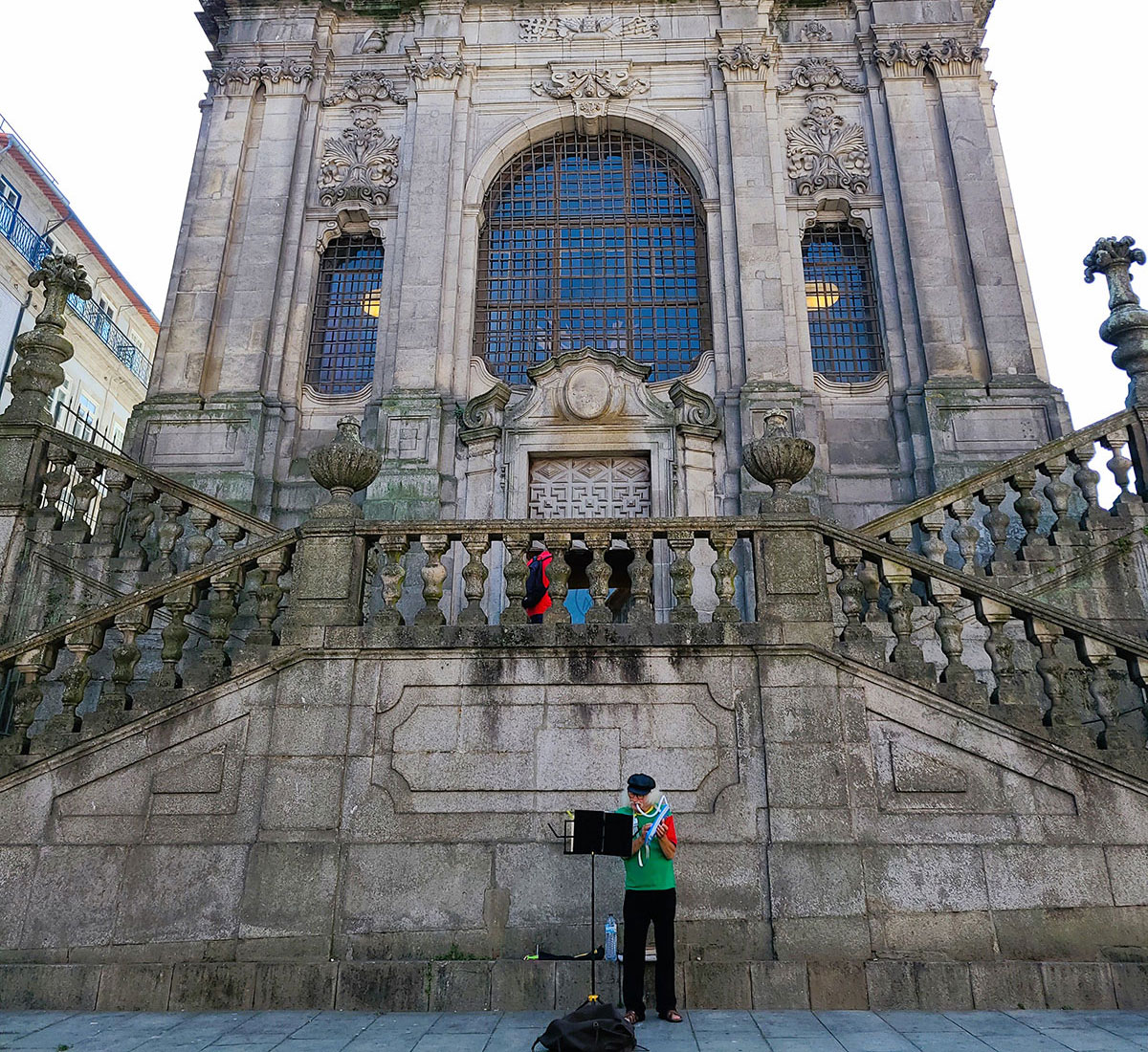 Clerigos Church.
Clerigos Church.North of the Torre dos Clérigos, on Rua das Carmelitas, we came upon the famous Livraria Lello.
Much more than an early 20th-century bookstore, it resembles an elegant museum, although it continues to actively promote new books and cultural events. One drawback to visiting this beautiful historic bookstore is that the line to enter trails down the street and the wait time can be 40 – 50 minutes.
![#5A.-Insert-AFTER--paragraph-5-After...-and-wait-time-can-be-45-50minutes.-NOTE...-Vertical-photo.-Place-Upright.-----TAG...-The-famous-Livraria-[Bookstore]-Lello.](http://sightsuncovered.com/wp-content/uploads/2023/03/5A.-Insert-AFTER-paragraph-5-After...-and-wait-time-can-be-45-50minutes.-NOTE...-Vertical-photo.-Place-Upright.-TAG...-The-famous-Livraria-Bookstore-Lello.-1.jpg) The famous Livraria [Bookstore] Lello.
The famous Livraria [Bookstore] Lello.We made our way from the bookstore to Rua do Carmo and the churches Carmo and Carmelitas. These churches are unique in that they appear to be one church – the largest church in Porto – when in fact, they are two churches separated by what is believed to be the world’s skinniest house. All of three feet wide, it was built to make contact between the nuns and monks possible.
Igreja dos Carmelitas on the left was built in the 17th century for Carmelite nuns, and Igreja do Cormo in the 18th century for Carmelite monks. Both churches were designed in the Baroque / Rococo architectural style.
The exterior side wall of Igreja do Cormo, is a magnificent piece of art composed of blue and white azulejo tiles depicting biblical scenes.
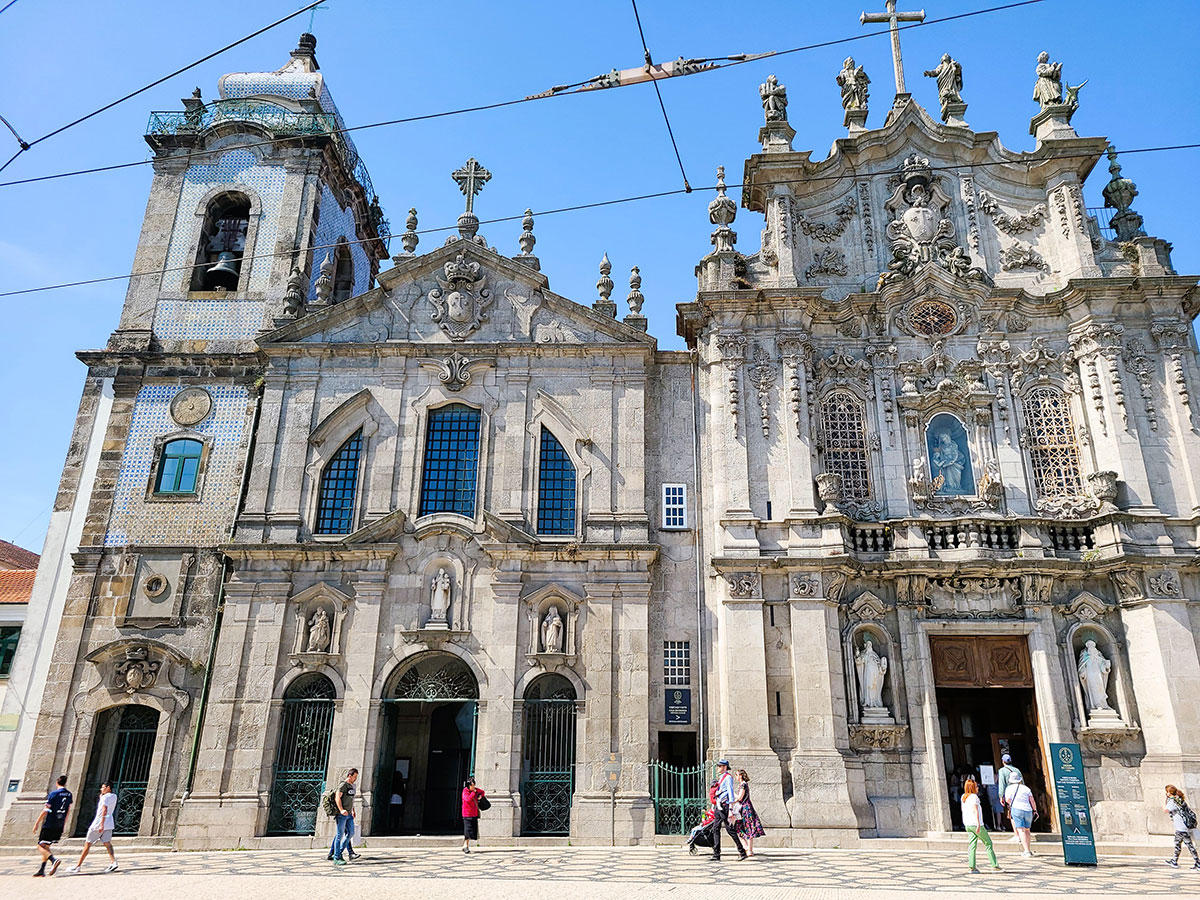
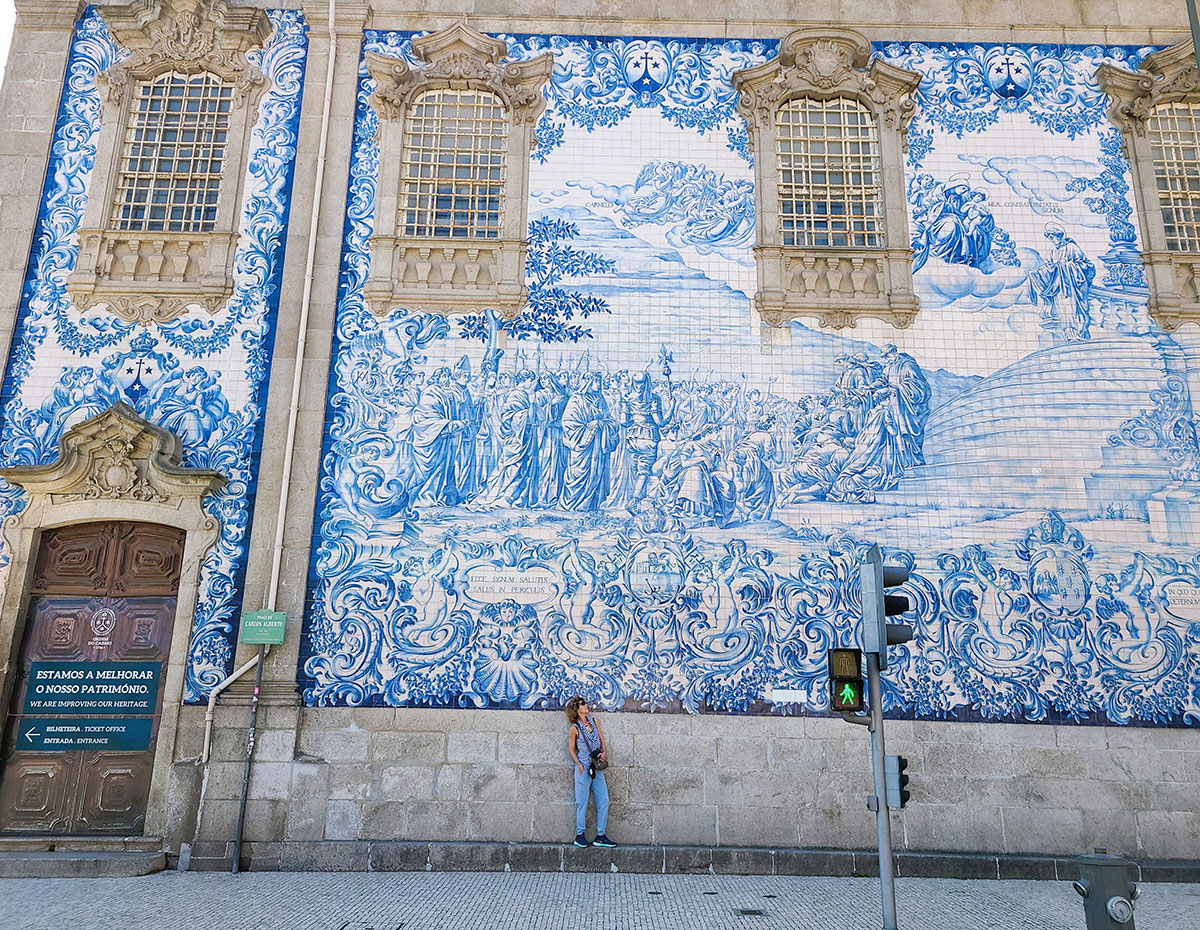
The Ribeira – Early morning, and I’m up and out the door by 8:30 a.m., walking down Rua de Sào Joào towards the Ribeira. The river – Rio Douro, sparkles in the spring sunshine. I relish my early morning walks in European towns and villages when mammas and housekeepers are pushing their grocery carts or lugging bulging shopping bags filled with fresh produce as they go about their morning routines. They stop now and then to greet and chat with neighbors, laundry flaps on lines strung across the colorful facades of buildings, and Praϛa da Ribeira has not yet stirred.
 Prace da Ribeira.
Prace da Ribeira.After lingering over breakfast outdoors, we strolled along the riverfront, where storekeepers opened shop and set out their wares. On Cais da Ribeira, we purchased tickets for a one-hour cruise along River Douro. The panoramic views of the city with its multicolored merchant houses from the boat’s decks are magical. We floated beneath the famous six bridges and passed Vila Nova de Gaia across the river from the Ribeira. Now considered a neighborhood of Porto, Vila Nova is actually a separate city.
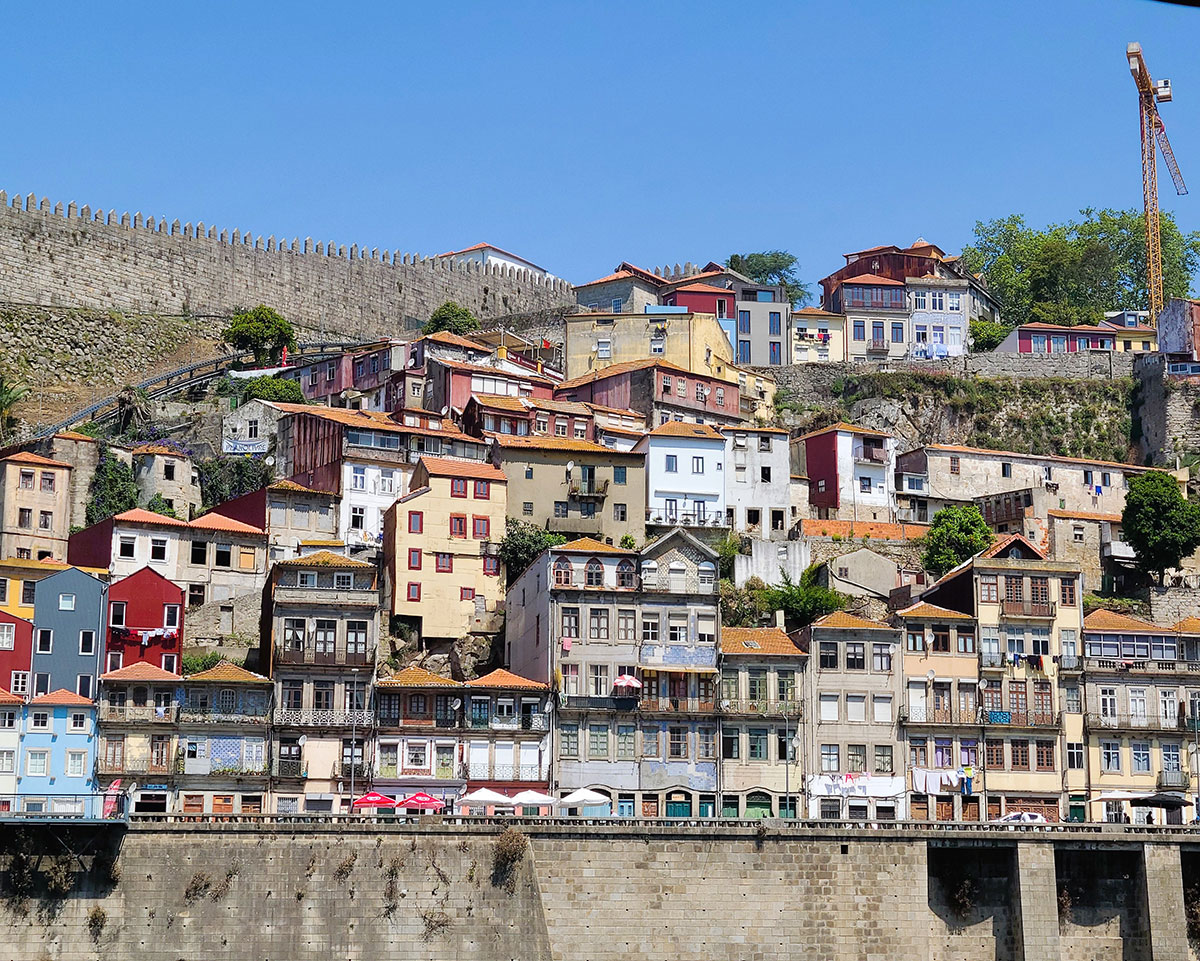 A view of the multicolored Mercahnt Houses.
A view of the multicolored Mercahnt Houses.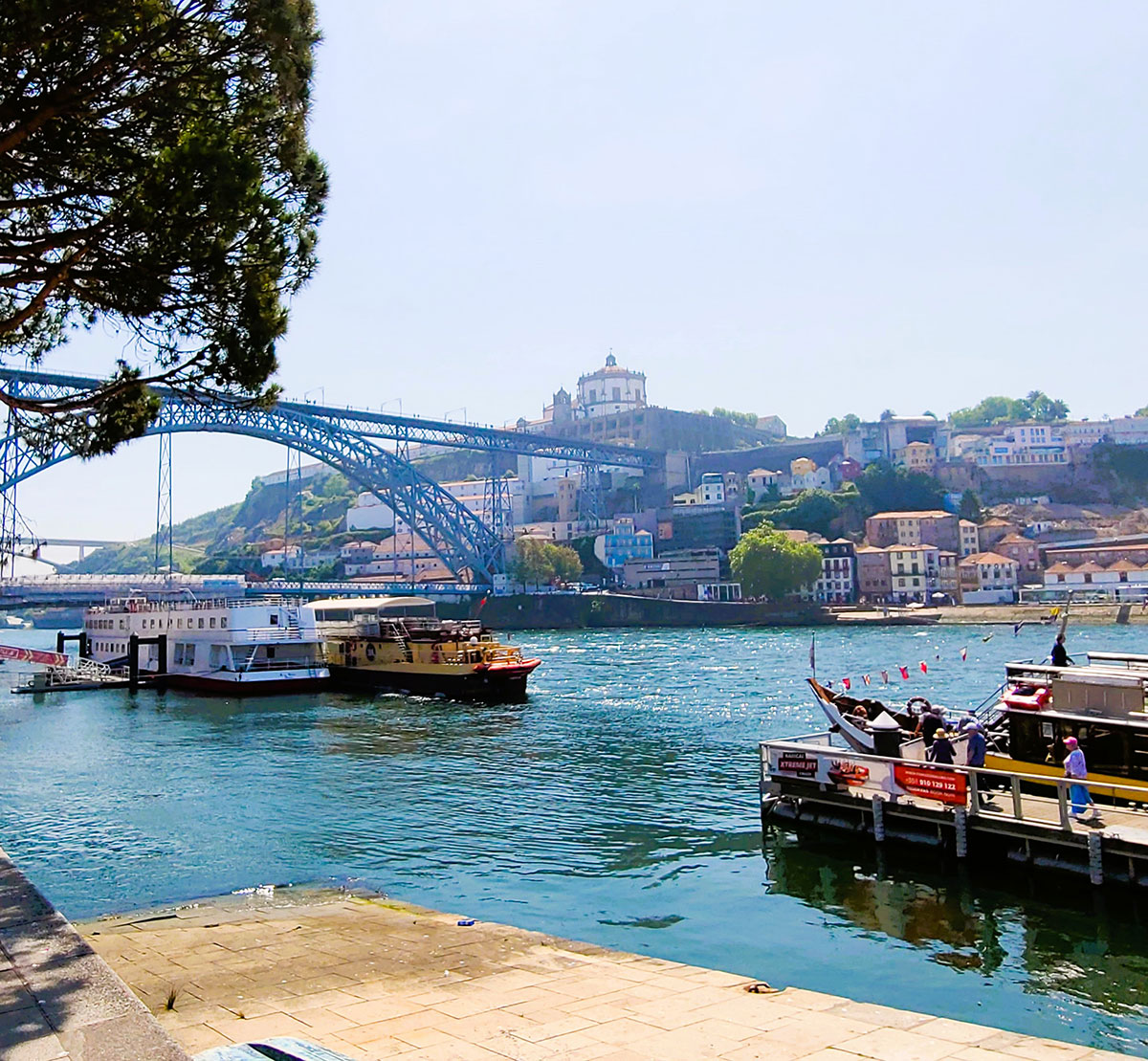 Vila Nova de Gaia across the river from the Ribeira.
Vila Nova de Gaia across the river from the Ribeira.Two of the most famous bridges are the Dom Luis I Bridge which delivers one to Vila Nova de Gaia – known for its port wine-tasting lodges and cellars, and the Maria Pia Bridge, originally a railway bridge, built in 1877 and designed by the iconic architect Gustave Eiffel.
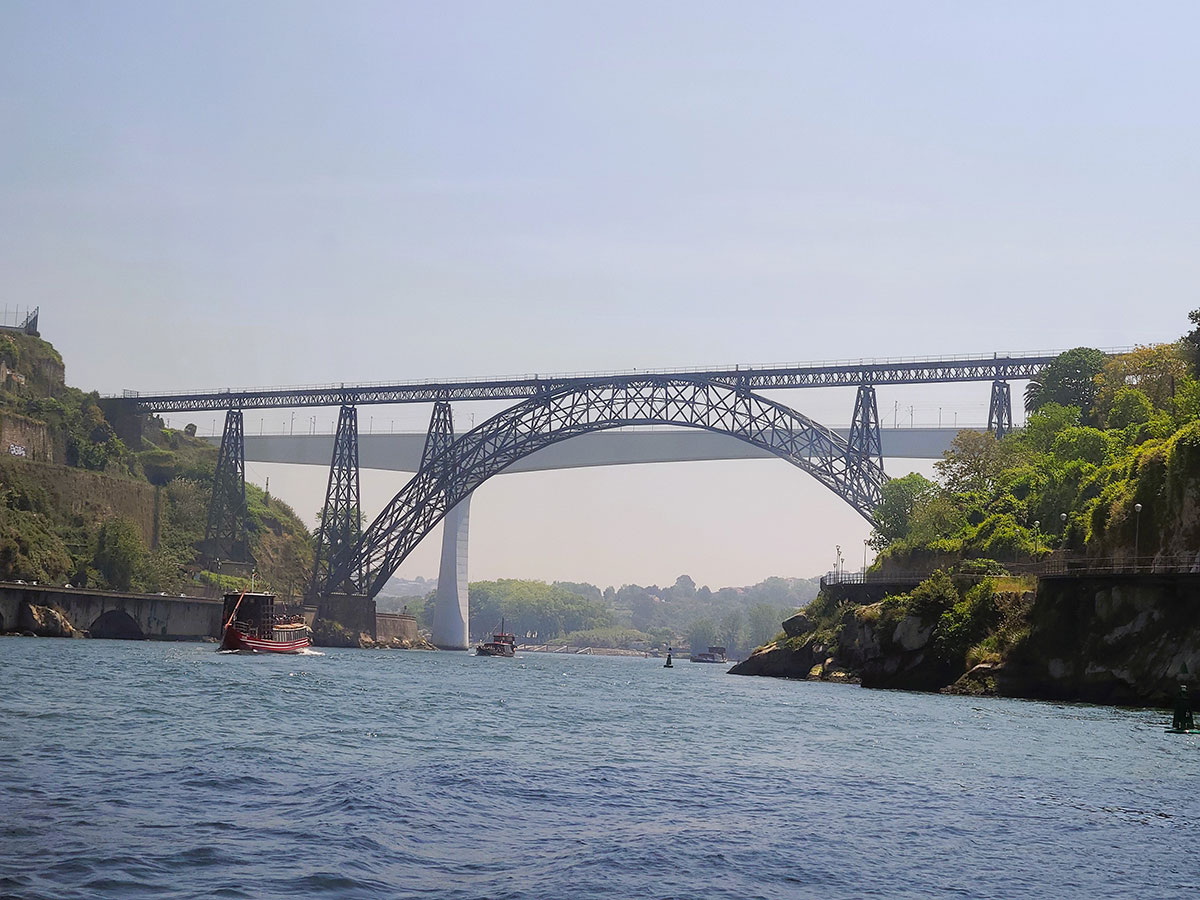 Architect Gustave Eiffel’s Maria Pia Bridge.
Architect Gustave Eiffel’s Maria Pia Bridge.We worked up a good appetite after our boat ride with a steep walk on an atmospheric, quiet, winding cobbled lane, past homes, and several tiny restaurants to Sé Catedral. One is rewarded for the climb by unobstructed views of Porto, the river, and its surroundings.
Time for lunch! We always chose small, family-run restaurants nestled in the maze of cobbled lanes. We particularly enjoyed the fish restaurants that serve the most flavorful fresh sardines, cod, tuna, and salmon.
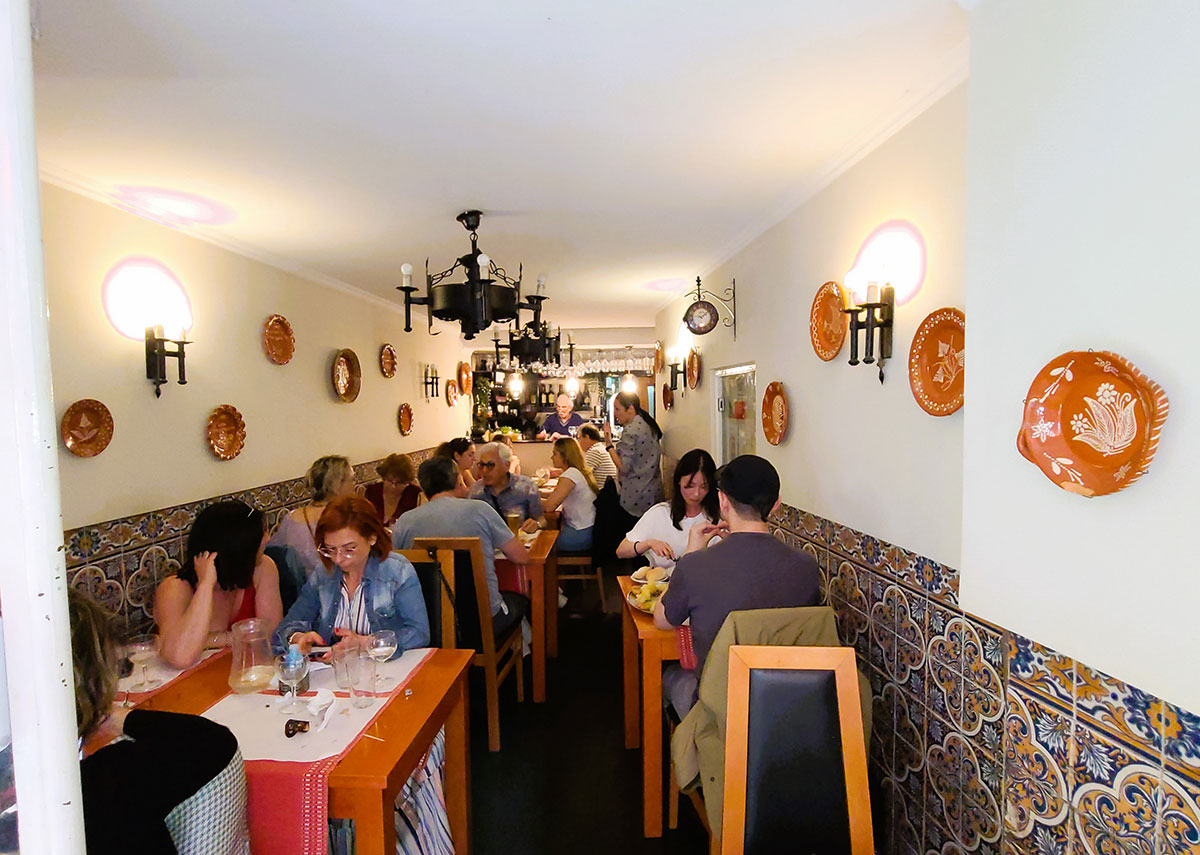
Unfortunately, we did not have time to visit Foz – a neighborhood where the Douro River enters the Atlantic Ocean. It’s twenty minutes from the center of Porto and a world away from the hustle and bustle. Once a fishing village, it now boasts lavish mansions, oceanfront walkways, beaches, restaurants, cycle paths, tramways, and fresh Atlantic Ocean air. It’s on our ‘to visit list’ on our next trip to Portugal. We had opted to drive to Guimaráes on our last day in Porto. Guimaráes is forty minutes by car. In 2012 it was voted the European cultural capital.
